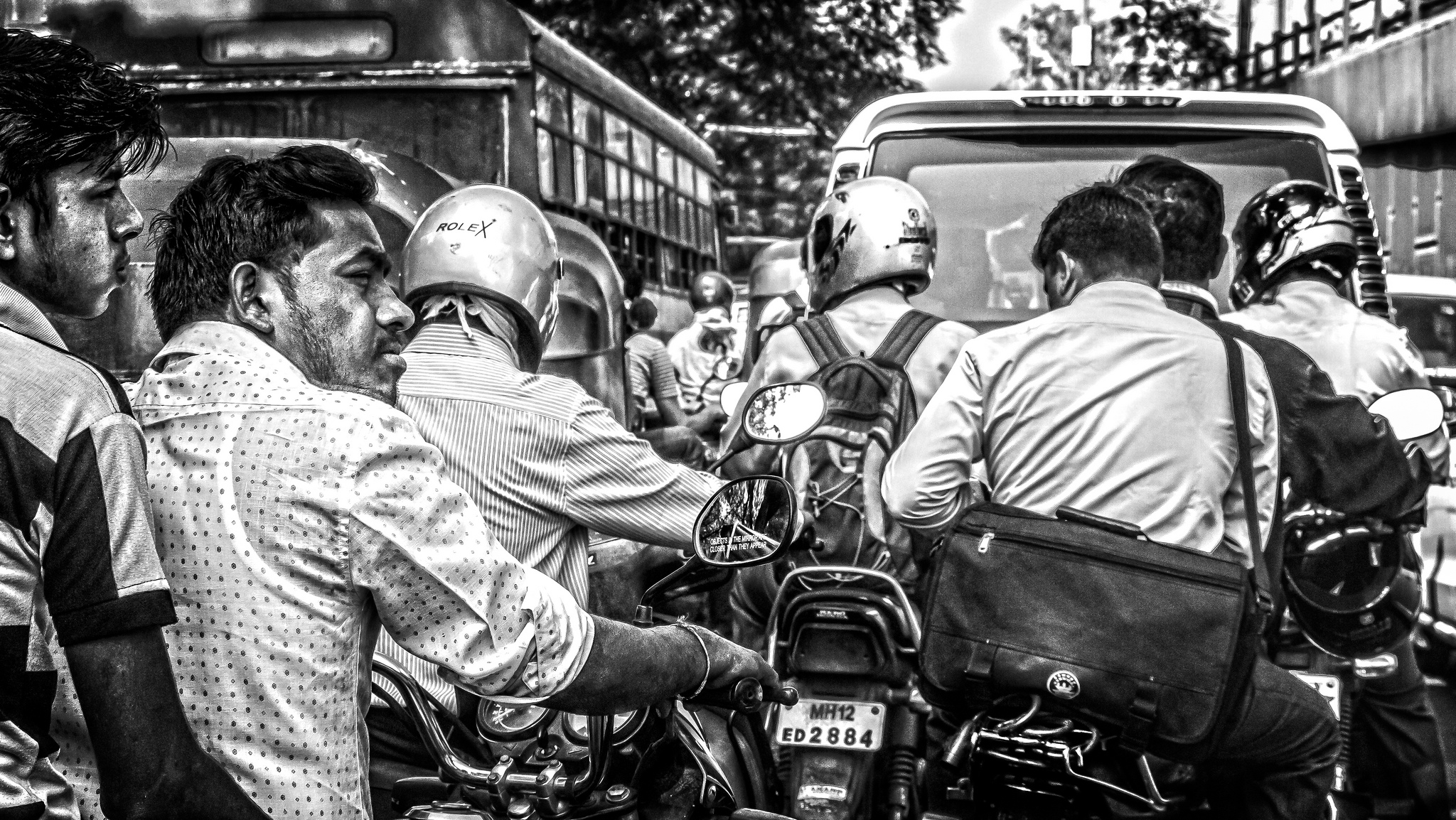Traffic in any major Indian city can seem crazy to an outsider. Crazy, scary, impossible, noisy, unruly, chaotic, .. and you can keep on rattling adjectives without ever ending up in a jam. Of these cities, Chennai is perhaps the craziest.
“How do you manage to stay alive on the roads?”, you may ask.
Having driven, scooted and biked (i.e. pedaled) these crazy streets for years now, I realize that a simple rule that I’m used to can make Chennai roads much safer for its users … and the city can continue to revel in its craziness if it wants to.

You may find signs that say “Drive safely”, “Drive carefully”, “Drive slowly”, “Wear a helmet” — b.t.w. my absolute favourite signs are “Use your head. Wear a helmet.” and “Wear a helmet. Avoid death.” (funny that one, eh?) — these do too little in terms of giving a usable toolkit to the average commuter to protect their lives on Chennai roads.
Something that an instructor taught me during my motorbike training classes in Singapore (thank you!) stuck with me as a beautifully simple, low cognitive load principle that a roadster can practice into habit in no time … and yet greatly reduce traffic accidents even in chaotic Chennai — the M.S.B.A. rule.
M.S.B.A. = Mirror. Signal. Blind spot. Action.
Simple. Drive/ride predictably as a default — i.e. go straight and don’t turn. When you need to turn, first check your rear view mirror, then when that’s clear, signal your intention, when that’s done turn your head to check your blind spot for vehicles and finally when all those are clear, act.
Mirror: Checking the rear view mirror only requires you to move your eyes and is extremely cheap to do as a physical action. So quite obviously this is the first check. If this fails, you’ve not only saved yourself a lot of effort, you’ve also saved others on the road a lot of effort as well. Use this chance to estimate the speed of vehicles closing up on you.
Signal: The next action that’s easy is to flick the change direction signal switch. You know your mirror is clear. So this is easy on our lazy phone savvy fingers. Again, be aware that just because you’ve signaled, that it will be respected on the road. Wait to be sure. Then comes the …
Blind spot: Turn your head and check if there are any vehicles lingering in your blind spot. Yes you have a blind spot! Chennai commuters have NO IDEA of blind spots, so if you’re one, do read up first. The average Chennai googler will figure out that if you’re driving, it is possible to setup your car mirrors such that you don’t have a blind spot. But in Chennai, you cannot rely on that because your mirrors may have been turned by a passerby when your car was parked and you may have forgotten to adjust it correctly before you started. You’ll also be assuming that folks follow lane discipline in Chennai, which they don’t. Furthermore, motorbikers as a matter of routine, make it a point to continuously ride in the blind spot of a car or bike ahead. In turn, drivers make it a point to shout at riders if they end up getting into their turning circle, screeching to a halt. Life is easier than that, people. It is smart to not rely on smartness. Just check the damn blind spot! The thing is, this takes more effort than the preceding three checks and so is rightfully, and safely, the last one before your ..
Action: Turn! Yup, that’s it. You’re done. Once you’ve cleared all the other checks, and found no vehicle in your blind spot, you can just safely turn! This, of course, is the most expensive action that needs protection. It requires you to physically change your vehicle’s direction, and a lot of things can go wrong with this, needing it to be protected by the preceding three steps.
This is really simple actionable safety design. Instead of saying “drive carefully” which can mean anything to anyone, you have a few injunction-free steps to walk through before you turn your vehicle. What’s more, the instruction doesn’t give you any freedom about the sequence in which to perform them, which makes it even easier to work into a habit. It is very well chosen to start with the smallest physical checking action and work your way up to the most consequential physical action on the road — turning.
Cognitive load-based design that saves lives. That’s what the M.S.B.A. rule is. Learn it. Use it.
- Notations
- Tala Keeper
- Demos
- Talks
GitHub · Twitter · Google+ · LinkedIn · RSS